When the Submerged Resources Center (SRC) first started reaching out to parks for my internship, they asked me if I had a top choice. Immediately, I said Channel Islands National Park. Most of my previous diving experience was in the cold water around the San Juan Islands of Puget Sound. Even though the conditions were tough, I loved all of the marine life and kelp. The only thing was… visibility was never good enough to see the bull kelp as a “forest”. Ever since, the idea of lush kelp forests in good visibility has been alluring. I also had spent some time outplanting hatchery-raised pinto abalone, but had never experienced seeing an adult abalone in the wild, and was excited for the chance. Ironically, Scotty Gabara, Marine Ecologist at Channel Islands, was the first to respond to SRC that the park could host me this summer.
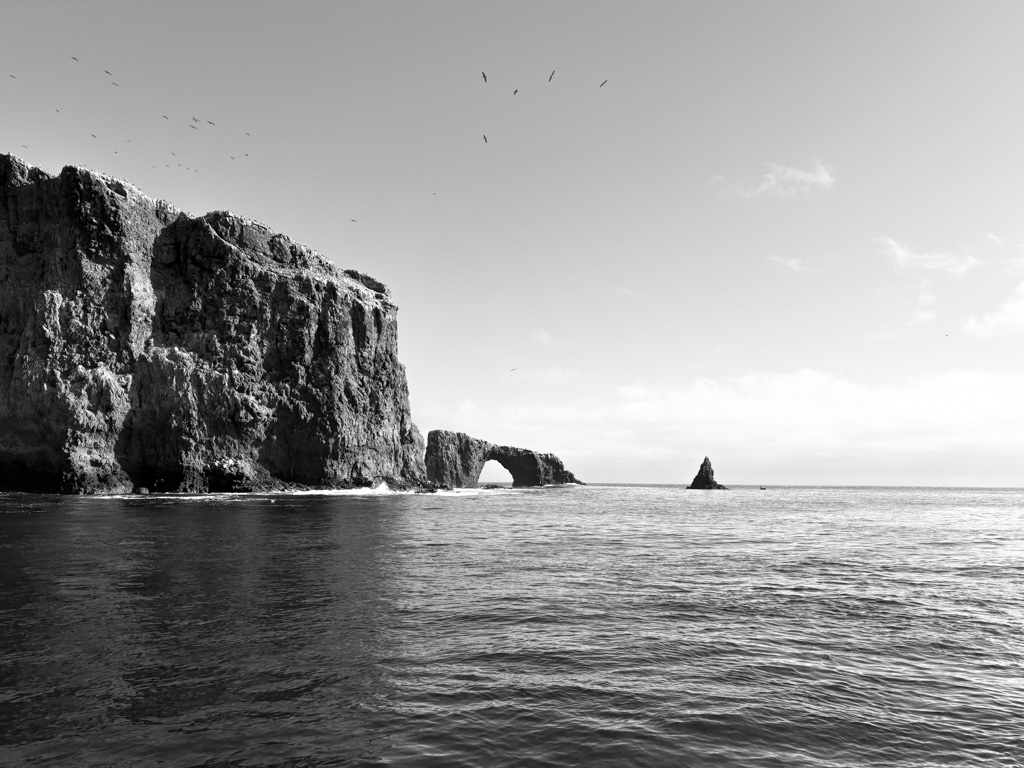
Ever since, I have been eagerly awaiting getting to dive alongside the Kelp Forest Monitoring (KFM) team. Now, two days in, the only water I’m in is spray from some choppy conditions. I’ll spare the horrific photos, but the nastiest ear infection of my life has been plaguing me for the past week. The night after I finished my cave course, I woke up to pain in my right ear, and proceeded to lose my hearing and bleed from my ear for the next five days, even on multiple antibiotics. I’d like to think I’m no baby, but the pain was pretty intense. Even more intense was my worry for what was going to happen if my ear wasn’t healed for the KFM trip.
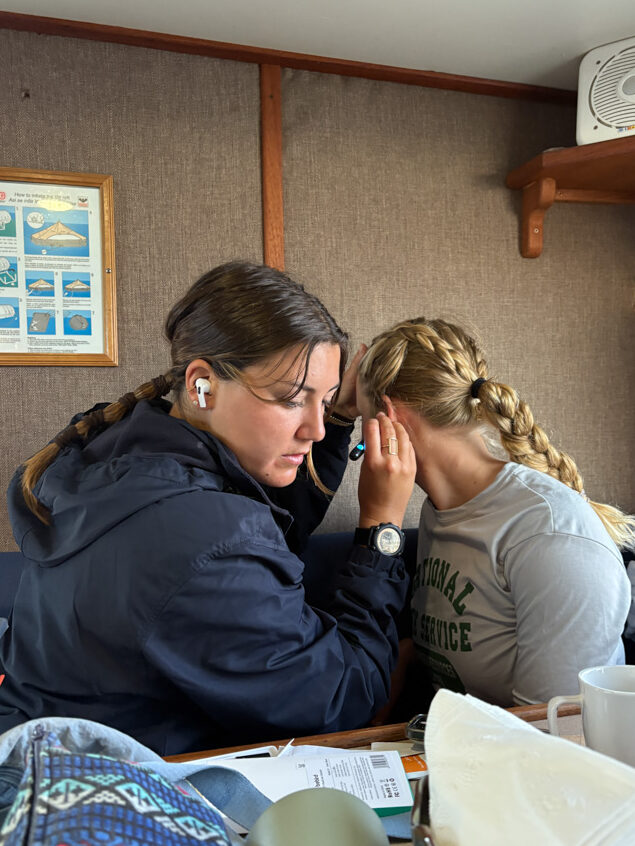
I found out soon enough. Probably my fifth sentence after being picked up at the airport shuttle by Kenan Chan, Biological Science Technician and Lead Fisheries Diver, went something like “soooo, I also have a super gnarly ear infection, nice to meet you.” He assures me the KFM team is used to dealing with petulant ears, and I’m in good hands. The team has an “ear camera” on board, and while my ears were feeling much better, a quick check revealed they were far from normal. I’ll leave out the details, but everyone on board agreed my ears were by far the grossest they’d seen. Marvelous.
That’s not to say I don’t have a great time my first few days. The seasonal workers for KFM, Lizzie Mceligot, Laney White, Ryan Hallisey, Katie Riley, and Arnel Lorenzo-Orig, are all super welcoming, even though I’m about to take up more of their precious space on board. Throughout the trip, I have a lot of fun with these folks, and it’s possible we trauma bond over some technical issues discussed later. I have free range to an abundance of snacks, which is basically my dream come true after two months of careful food budgeting. Spending all day snacking and diving would be ideal, but I’m still thrilled. I try to make myself as useful as possible, helping divers in and out of the water and assisting with data topside, but to be fair, this team is so self-efficient, I’m hardly any use. I still enjoy getting to see how their diving operations work, and all the little goodies they bring up to measure, like white urchins and abalone shells. Brian Cunningham, our boat Captain, entertains me by showing me the compressor room and has an impressive sixth sense for where our divers are at all times.

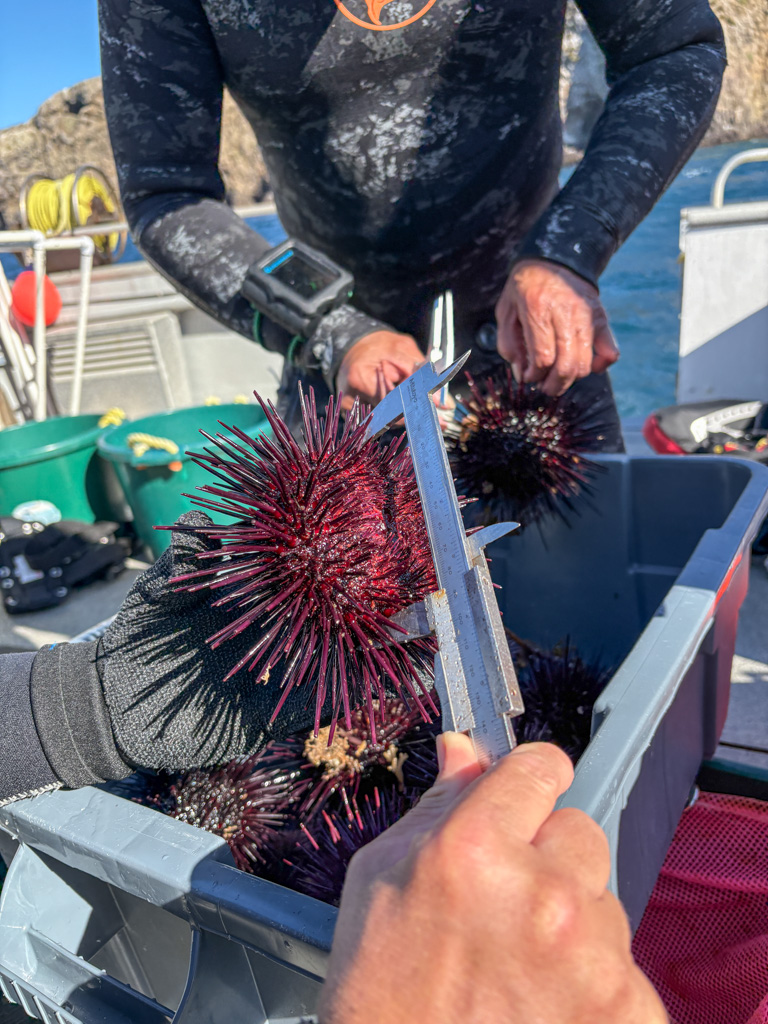
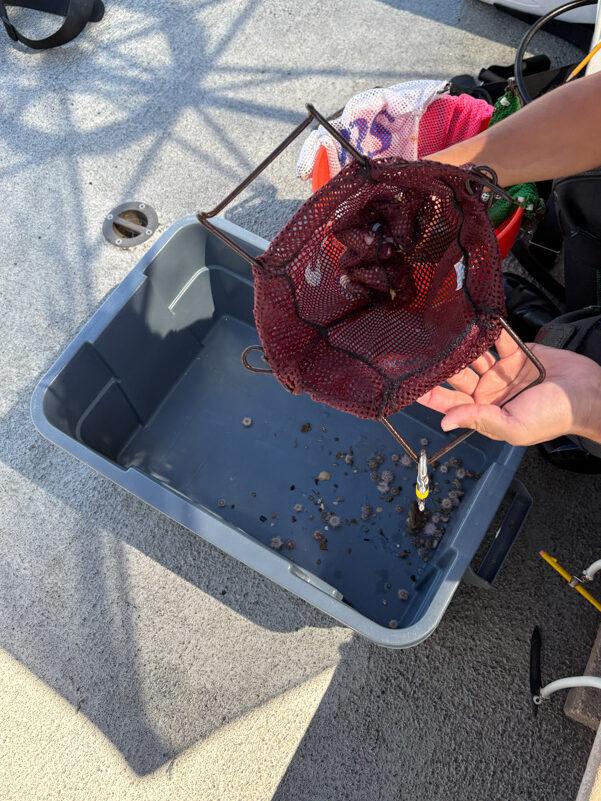
The next day, I still avoid eye contact with my dive gear, but I justify a good surface snorkel. Not even five minutes in, I fall head over heels for the kelp forests. They are everything I imagined and more. With the sunlight streaming in, I have the perfect view down to the bottom. To my delight, a few garibaldi come say hello, and I am somewhat surprised by how unfazed many of the fish are by my presence. The sheepshead are especially curious and approach pretty close to see what I’m up to. At one point, a cormorant even swims below me, chasing some fish, and I can’t help but laugh through my snorkel at the bizarre sight of a bird torpedoing through the water.
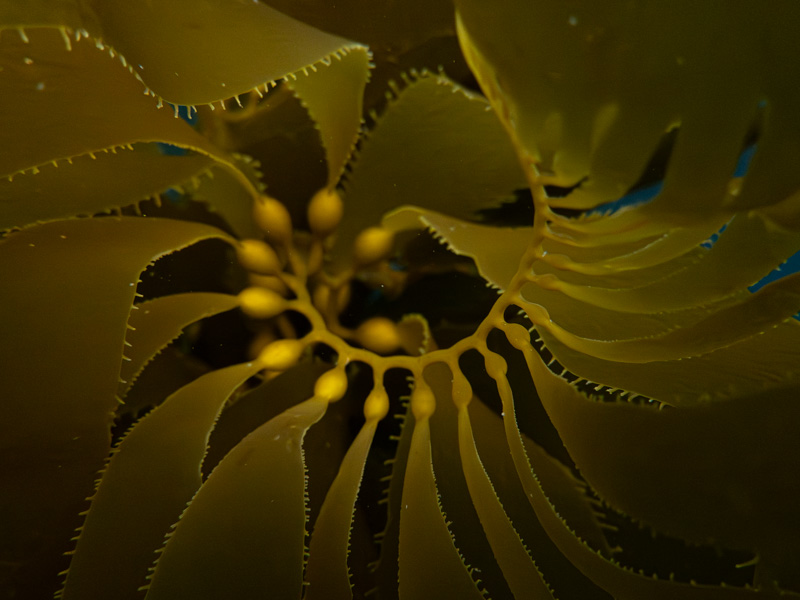
Around this time, I’m starting to get a little too toasty in my wetsuit. This is my first time wearing a seal skin wet suit (and also my first introduction into wiggling into them – if you know, you know), and I am shocked by how warm I am. I head back to the boat to take off a layer and then jump back in, already missing the swaying kelp. As the sun hangs lower in the sky, the kelp turns gold, and I can’t help but think of this beautiful ecosystem as a chest bursting with treasure. Bright urchins and shards of iridescent abalone shell litter the floor like jewels, and it’s easy to see why many of these species have dwindled in number because of high demand. Just as I’m sneaking up under a seagull to see how close I can get, a large triangular shape glides under me.
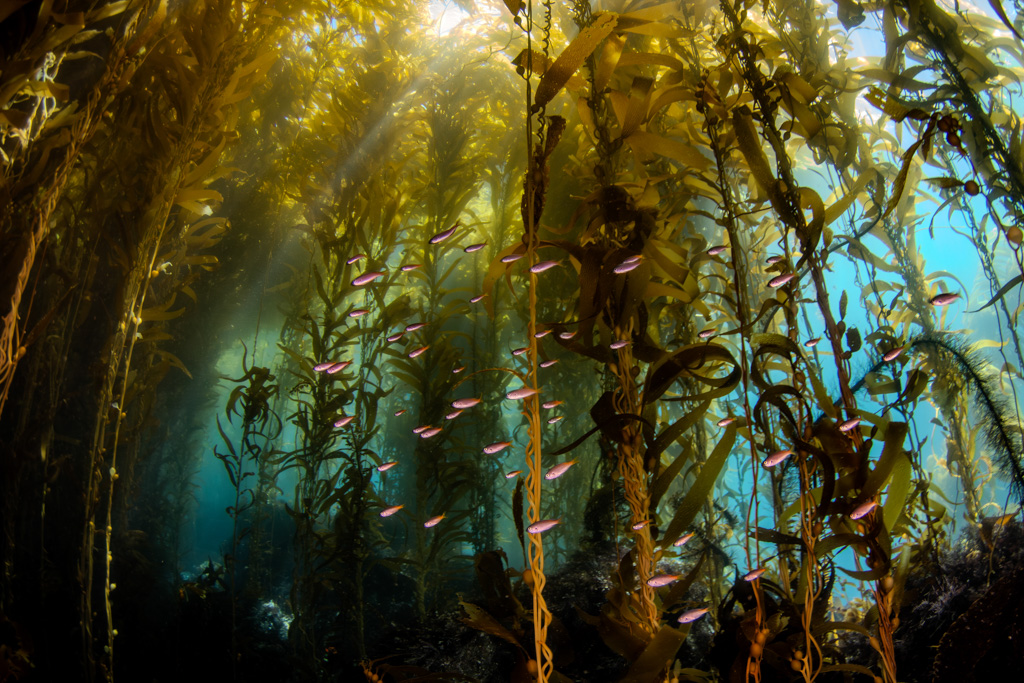
Pretending to forget about my particular ear issue, I dive down to say hi to the adorable bat ray who is calmly swimming along the bottom. Ignoring the pain as I equalize, I manage to snap a few shots. Realizing that I may have pushed a little too far today, I make my way back to the boat feeling very content with my kelp frolicking.
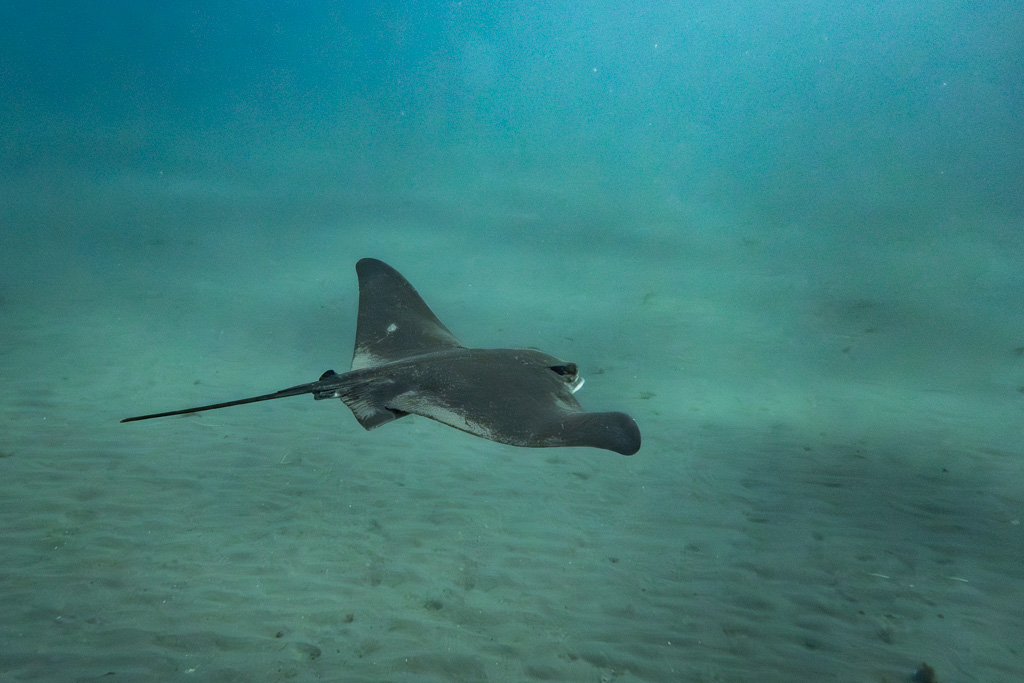
Unfortunately, later that evening, we ran into some toilet troubles that were going to disrupt the entire trip. Bryan, Scotty, and Kenan valiantly try their best to fix the head, and all I will say is that a fair amount of buckets were involved. Sadly, our heroes remained defeated, even if the rest of us were cheering them on (from the sidelines, as far away as possible). If the world is your oyster, then the ocean became our bathroom for the night.
We headed back to the mainland the next morning, hopes high that our issues could be quickly resolved and we could get back to the monitoring sites. After some horrific troubleshooting that involved pulling apart various parts of the plumbing, our dejected heroes finally located their suspect… a sink drain strainer? While we all remain dumbfounded on how it made itself into the toilet, as obviously, no one put it in there. A leading hypothesis involves it rolling off the sink counter because of some rough conditions we had earlier in the week. I still think there might have been aliens involved, but that one was no easier to prove.
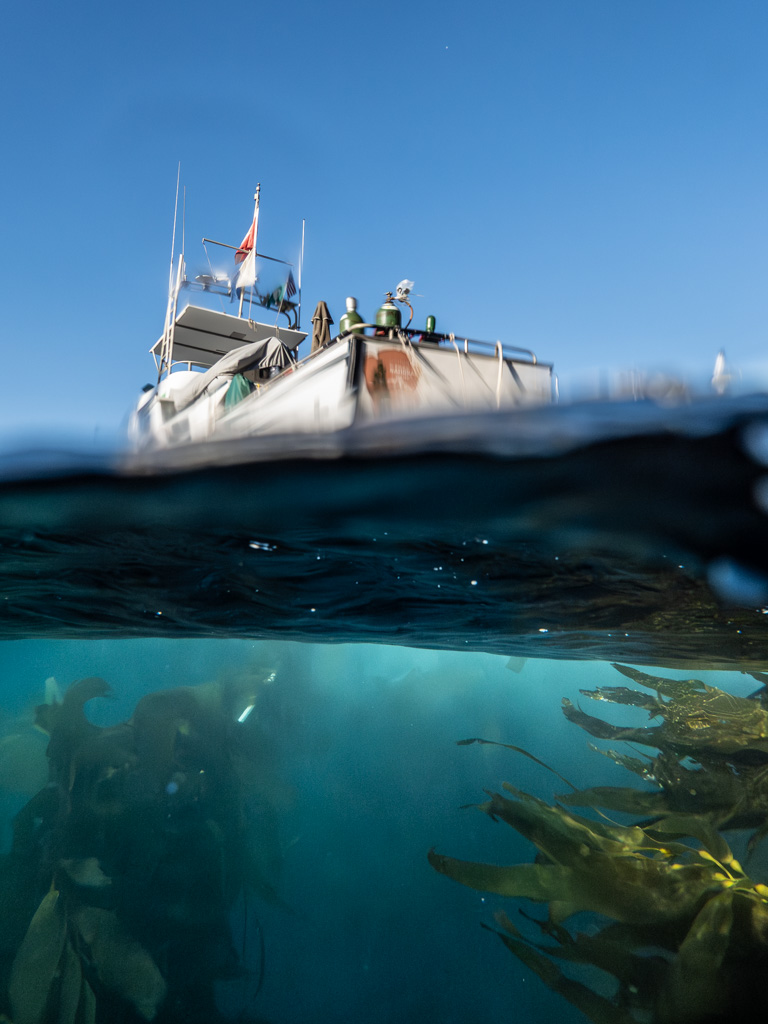
Thanks to the dedication of these three, we were able to get back out in the afternoon so the team could work. By the time Thursday rolled around, nothing was going to get between me and a dive. While my ear didn’t look particularly better, it didn’t look worse, and that was good enough for me. The kelp was calling me! Since I don’t have the species identification background to help with KFM protocols, I get to use a camera while everyone is diligently working.
If snorkeling was amazing, my dive was an out-of-body experience. I was gliding through a dreamland of swaying kelp and brilliant red algae carpeting the floor. Bright orange giribaldi flashed in and out of the kelp stipes, and the water was unbelievably clear, revealing complex rocky reef and gorgonians rolling in time to the surge. An octopus peered at me from a crevice, and little horned sharks hid among the red algae. Towards the end of the dive, I get bombed by a sea lion who charges straight at me and blows bubbles in my face before disappearing. Everywhere I look, there is an astounding amount of lush, healthy life. Kenan points out an abalone, and bubbles rush around my face as I squeal in excitement. I’m convinced that I’ve had the most perfect dive ever, and nothing will top it.
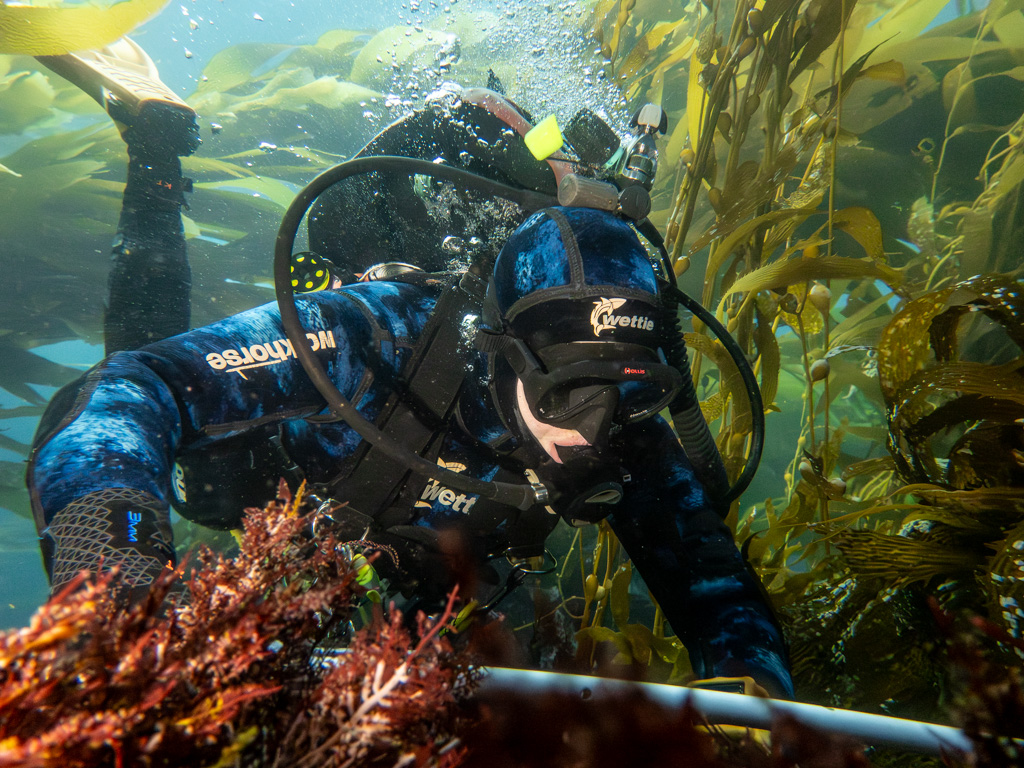
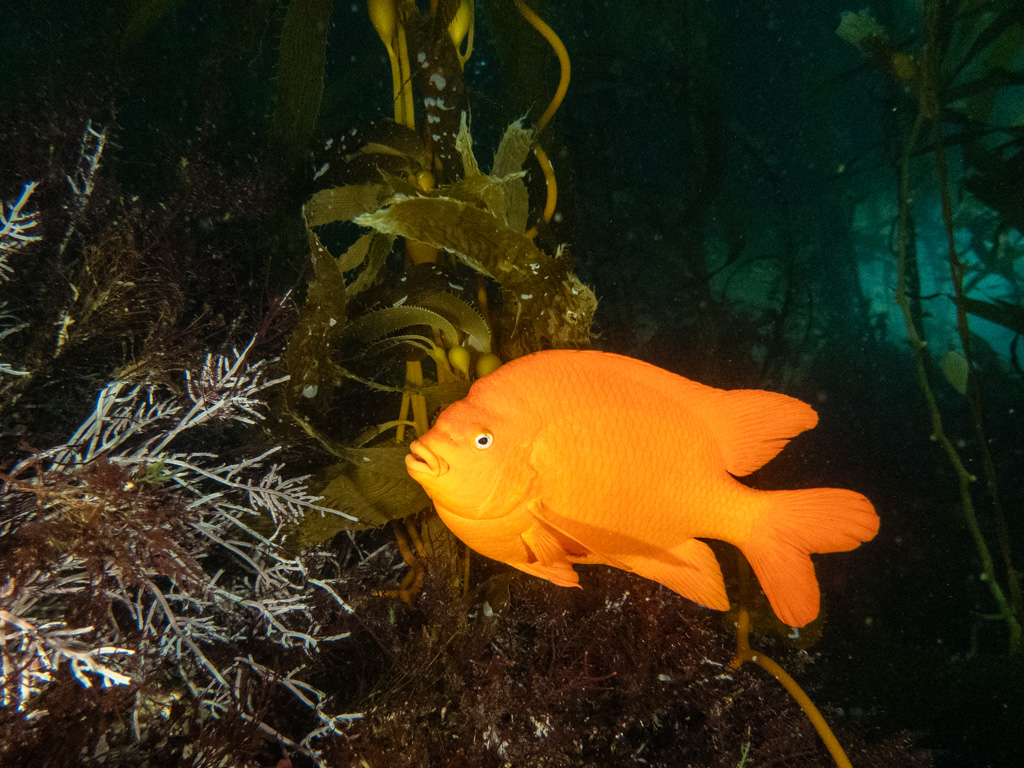
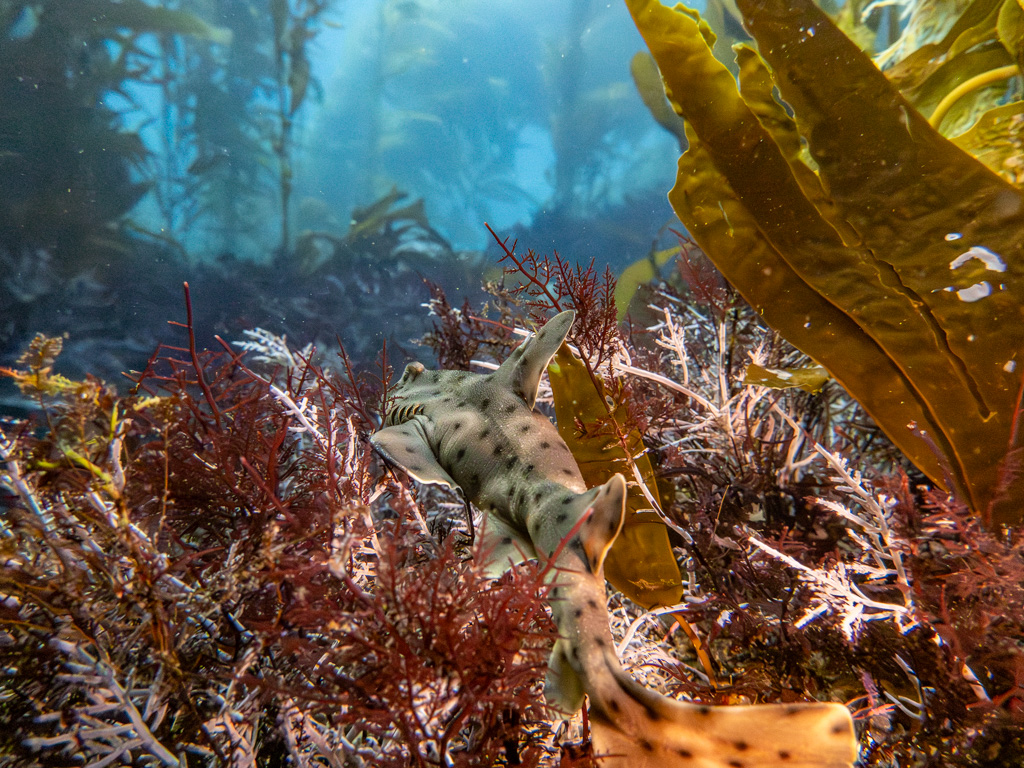
Then, at our next site, a massive fish sideswipes me. I almost lose my regulator from my mouth as my jaw drops at the giant black sea bass that is checking me and my buddy Ryan out. After swimming right by me, it cruises on towards Ryan, who is being mimicked by a curious sea lion. Just when I think fish and sea lion are going the collide, they both shoot off in a jumble of motion. At this point, I’m yelling through my regulator at Ryan in disbelief and excitement. The sea bass is easily larger than the sea lion, and this is the point where I finally start to comprehend what a huge creature it is. Later on our transect, it glides in front of us, and I turn around to see Scotty pointing at another one that was checking out my fin right behind me. I would have never known!
Even though I’ve had the privilege to see some beautiful and awe-inspiring sights, nothing has evoked this sense of prehistoric wonder like these sea bass. I felt like I swam through a time portal and caught a glimpse of the past through this majestic fish that used to roam around these islands in even bigger proportions and numbers.
It’s only because of protections from California Department of Fish & Game as well as the park and marine sanctuaries of Channel Islands that these creatures are still around. In a similar story to many other species in the area, like abalone, this fish was over-harvested to the brink of collapse. Without the careful intervention of regulations and protective policies, there is a very real possibility I would have never been able to experience them (NPS). Laney tells me about a sea bass at another site whose mouth is mangled from fishing gear, and I am filled with immense sadness imagining the peaceful beasts I had encountered meeting the same fate. While frighteningly big, there was something compelling in the way they slowly stared at me with their huge eyes. These fish have a lifespan similar to humans, and I wonder at all they have experienced and survived over the years to make it where they are today, watching a gaggle of divers measuring urchins.
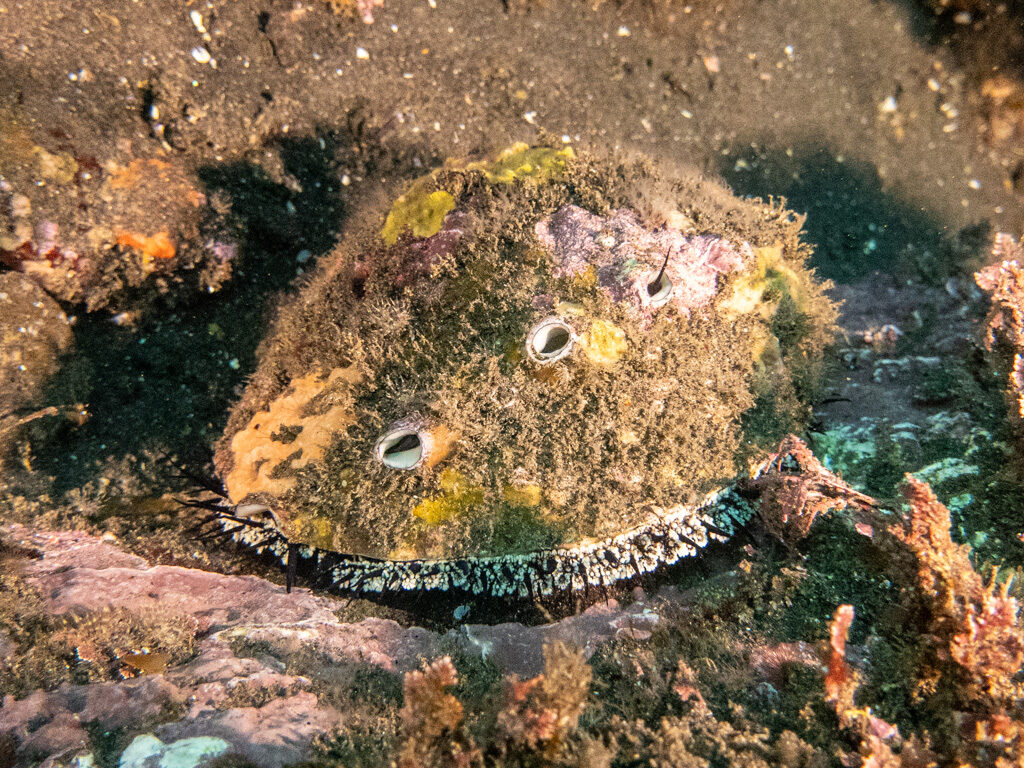
Friday, my last day with KFM, we dive the lighthouse at Anacapa again. I descend this time with Laney as my buddy, and while I never get a visit from the sea bass again, the sea lions don’t disappoint. As Laney is focused on completing her surveying, sea lions and the odd harbor seal cruise by to take a peek at us. Soon enough, I’m distracted by the beauty of the small. Spanish shawl nudibranchs cling to rocks, and I laugh as the raised structures on their backs stream behind them as they are whipped back and forth in the strong surge, like some underwater roller coaster ride. A shy octopus braves my camera to leave its hidey hole and meander between some boulders, giving me a somewhat accusing eye as I follow it.
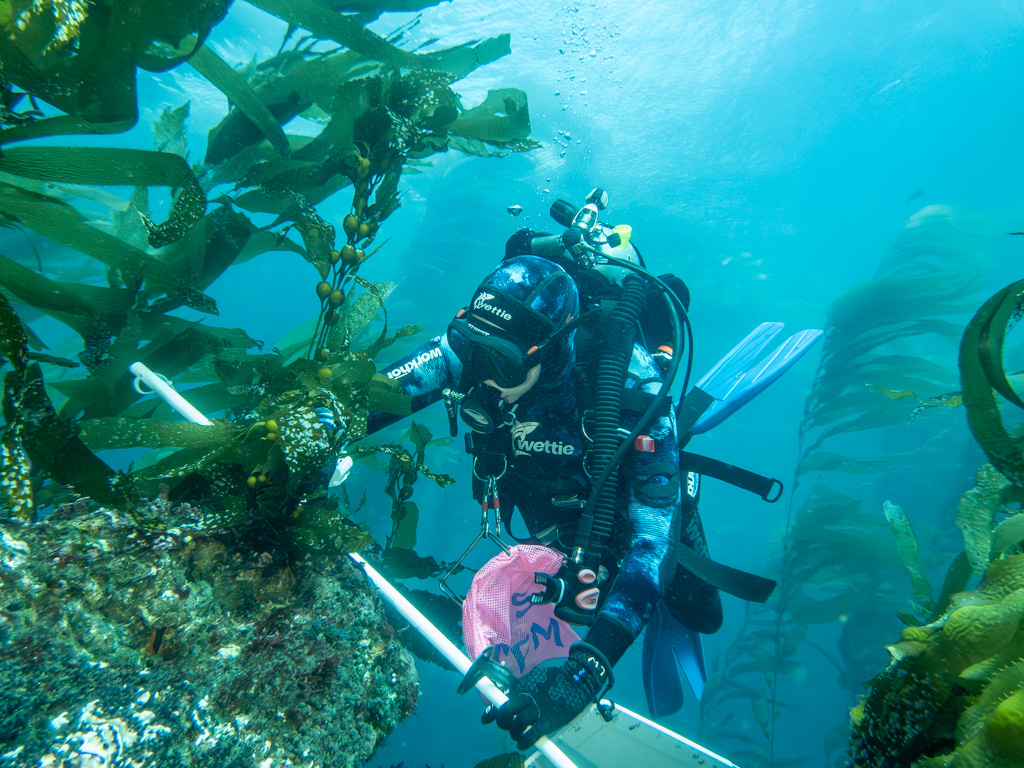
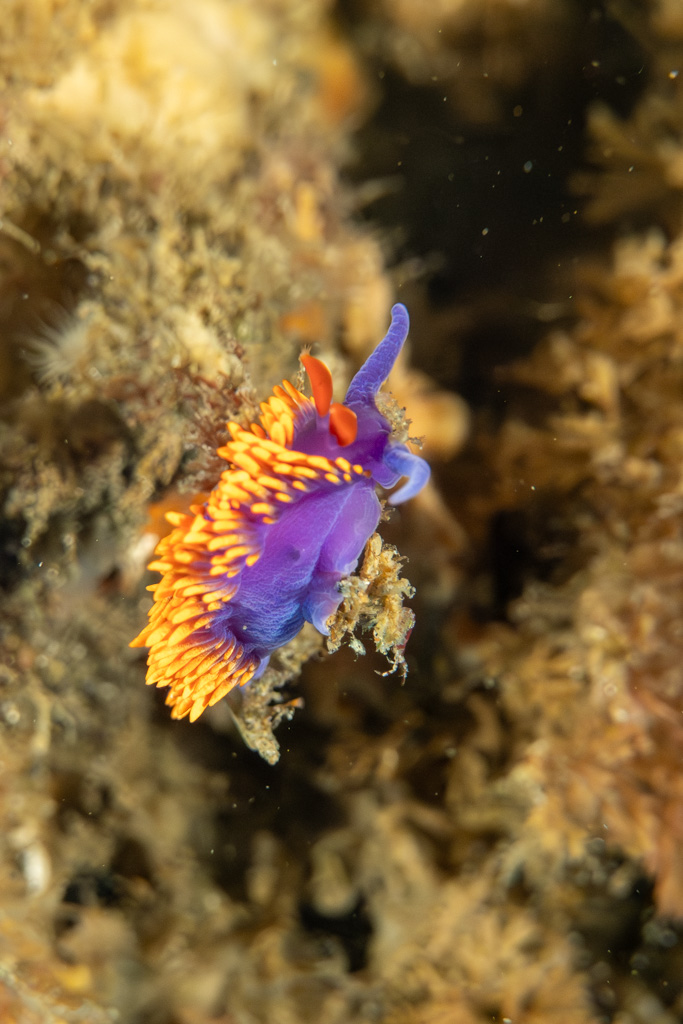
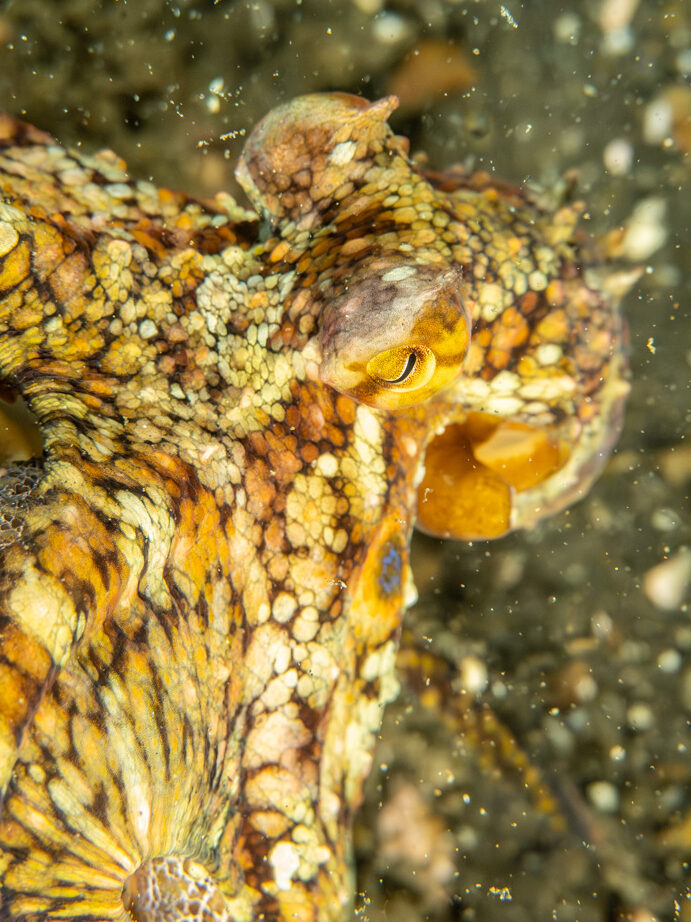
Towards the end of the dive, I run into Kenan finishing his band survey with an inquisitive sea lion hanging nearby. Of course, the sea lion was more interested in harassing the person working, not holding the camera, but it eventually came over to investigate. I spent the end of the dive playing hide and seek with it. It would watch me from the kelp until I’d pretend to ignore it, and then all of a sudden it would come zooming by, doing somersaults in my face. I noticed if I leaned to one side or the other, it would sometimes mimic me, which was adorable! This experience filled me with so much joy and was an awesome way to end my diving with Channel Islands.
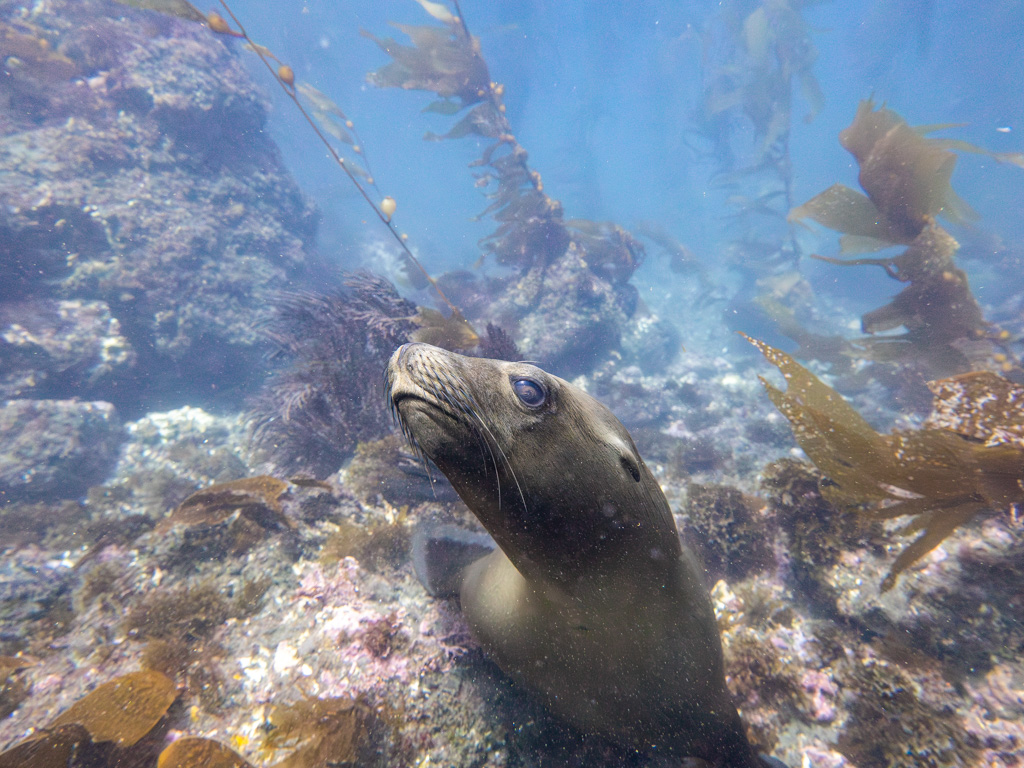
I spend my last hour out of my gear, holding onto the tagline and drifting in the current. Dozens of sea lions play beneath me, and then they burst out of the water as they move on to their next source of entertainment. Brown pelicans fill the busy sky around the lighthouse, and the odd peregrine falcon soars by the cliffs. From sea to sky, the Channel Islands are truly a paradise, brimming with unique life, all benefitting from the park and marine protection areas, and the incredible long-term surveying efforts of KFM teams.
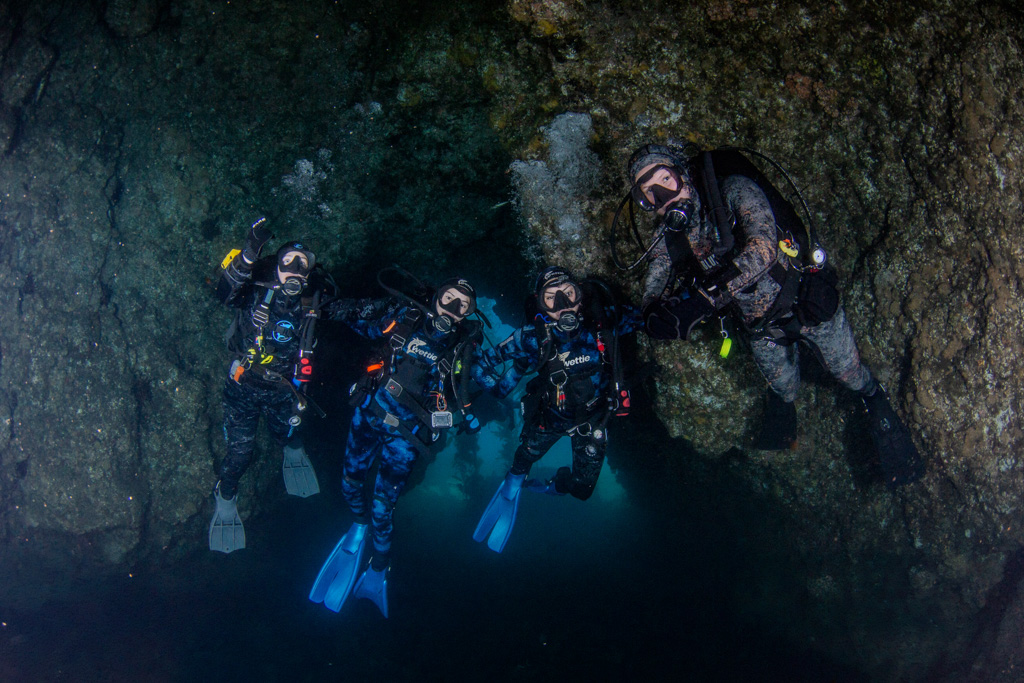


Neat!